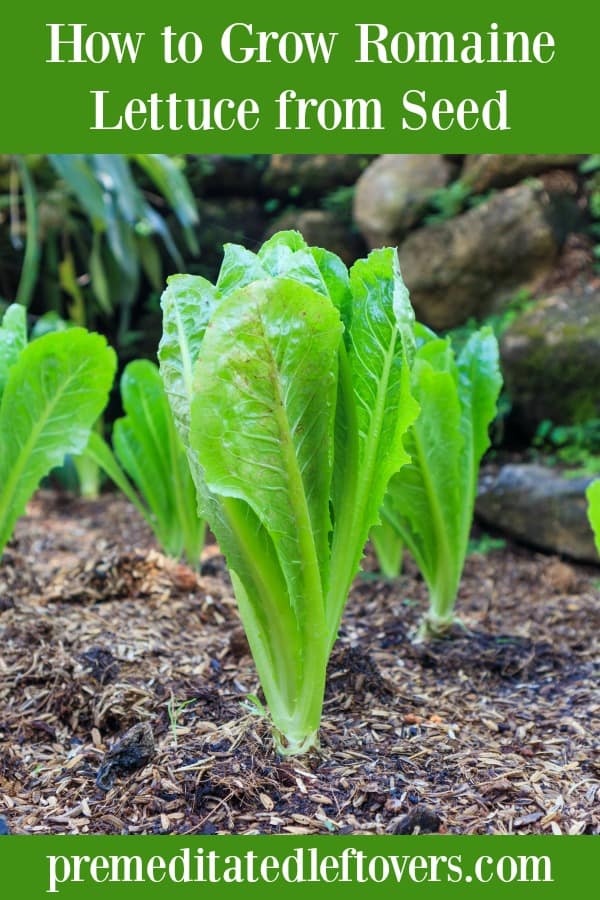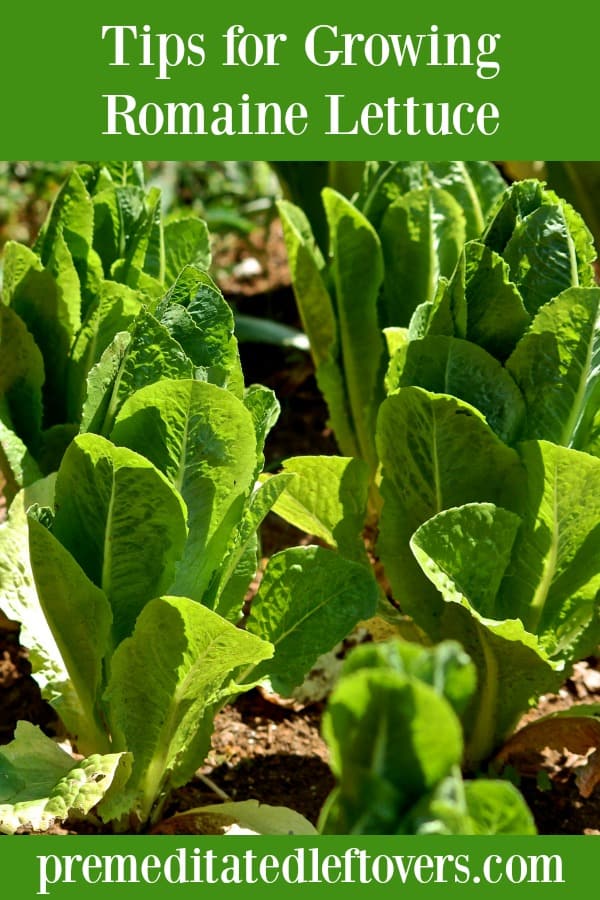This guide on how to grow romaine lettuce includes tips on planting romaine lettuce, caring for romaine lettuce plants, and harvesting romaine lettuce.
If you love fresh salads and would love the convenience of fresh salad greens in your own backyard, planting romaine lettuce is ideal for you. Romaine lettuce is an easy leafy green to grow, and it is a plant that will produce fresh greens all season long. Look below at some helpful tips on how to grow romaine lettuce, and see how simple it can be to have this tasty green at your fingertips!
How to Grow Romaine Lettuce
How to start romaine lettuce from seed:
You can either plant your romaine lettuce seeds directly in the soil or start them indoors about 4 weeks before the last frost of the season. Whether sowing seeds indoors or out, using a nutrient-rich, loose soil and choose a container/space with good drainage. Create a shallow row that is about ½ an inch deep and sprinkle the super fine and tiny seeds into the trench. Cover loosely with soil. Keep the soil cool by keeping it moist and sprinkling around the area with compost.
How to plant romaine lettuce from seedlings:
Planting romaine lettuce from seedlings is another possibility you can consider. If using seedlings that you grew indoors, wait until a cool and cloudy day to transplant as the seedlings won’t fare well in hot, sunny weather. Choose a spot with part sun, as romaine tends to do better if not exposed to 8 hours of direct sunlight.
If planting store-bought seedlings, you can plant them directly into the soil several inches deep (cover the roots and leave the foliage above ground) and space them 12 inches apart. If you are creating rows, you want to be sure your rows are at least 18 inches apart. Add compost around the base of the plants to keep the roots cool and help them retain moisture.
Romaine lettuce growing tips:
In most cases, regular rain will keep the romaine lettuce well hydrated. If you don’t experience frequent showers, you can water the romaine with about 1-2 inches of water per week. Be careful not to overwater, and watch for soil sogginess. You can use a liquid plant food on the seedlings once they have reached about an inch in height.
Romaine lettuce does not like to share its space with weeds. Keep the area around them weeded so the shallow roots don’t have to compete for nutrients.
How to grow romaine lettuce in containers:
If you have limited space, planting romaine lettuce in a container is a great idea. Use a large flower pot at least 12 inches wide and 12 inches deep per single plant. Add additional drainage holes to the pot if need be, as you want to be sure the roots don’t experience sogginess or rot. Place your pot in an area with part sun, and avoid letting it overheat.
Tips for dealing with pests:
Animals love to nibble on leafy greens. When you grow romaine lettuce, you might experience problems with deer, rabbits, and chipmunks. These pests can best be dealt with by using marigolds around the garden, adding additional chicken wire fencing, or by sprinkling dog hair around the plants.
To combat pests like aphids or beetles, you can use food safe pest repellents or a natural solution such as a dish soap/warm water spray. Removing pests by hand is also a viable solution and can put an immediate stop to attack. Slugs can also be an issue when it comes to romaine lettuce, so setting up slug traps can keep the situation under control.
When and how to harvest romaine lettuce:
The neat thing about romaine lettuce is the leaves are ready to be harvested as soon as they are the size of about two fingers. This means you don’t need to wait very long to start harvesting. When harvesting romaine lettuce, pick leaves from the outside of the plant and allow for the smaller inside leaves to continue to grow.
Once harvested, it is best to enjoy your romaine lettuce right away. Use it in fresh salads, coleslaw recipes, on burgers, in sandwiches, or even in breadless wraps. The lettuce will stay fresh if kept in a cool place for up to 48 hours.
Growing your own “salad garden” is a great way to keep fresh leafy greens on hand. Give these tips on how to grow romaine lettuce a try and see how easy it can be.
More Gardening Tips:
- How to Grow Lettuce
- How to Grow Turnips
- How to Grow Potatoes
- How to Grow Artichokes
- How to Grow Asparagus
- How to Grow Corn
- How to Summer Squash
- How to Grow Zucchini
- How to Grow Eggplant
- How to Grow Green Beans
- How to Grow Rhubarb
- How to Grow Green Peppers
- How to Grow Snow Peas
- How to Grow Cherry Tomatoes



Leave a Reply